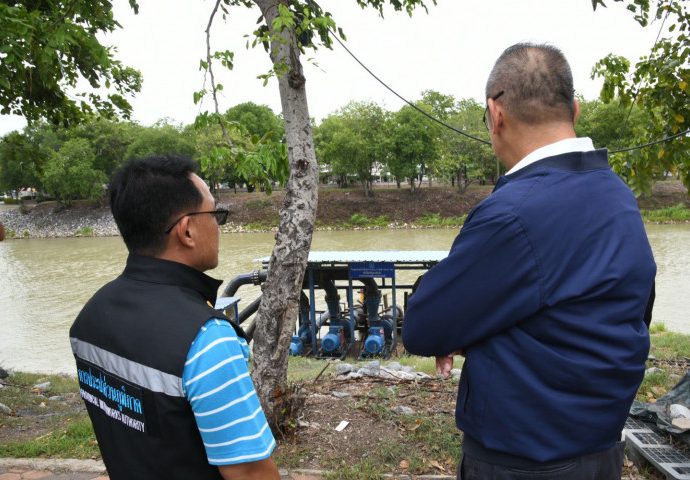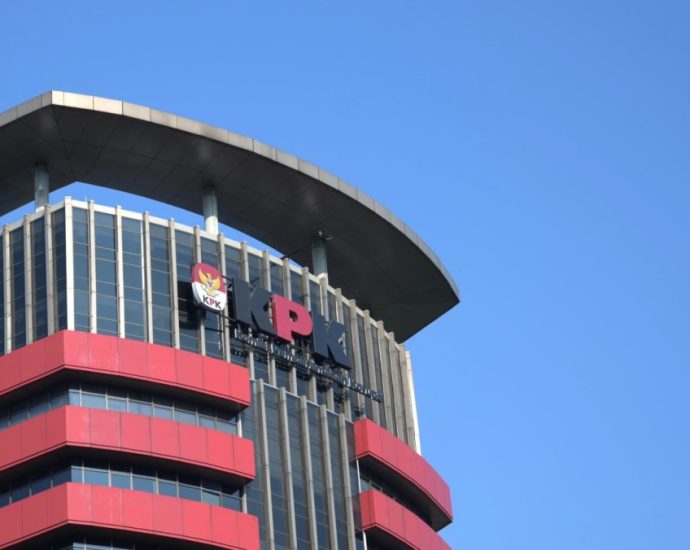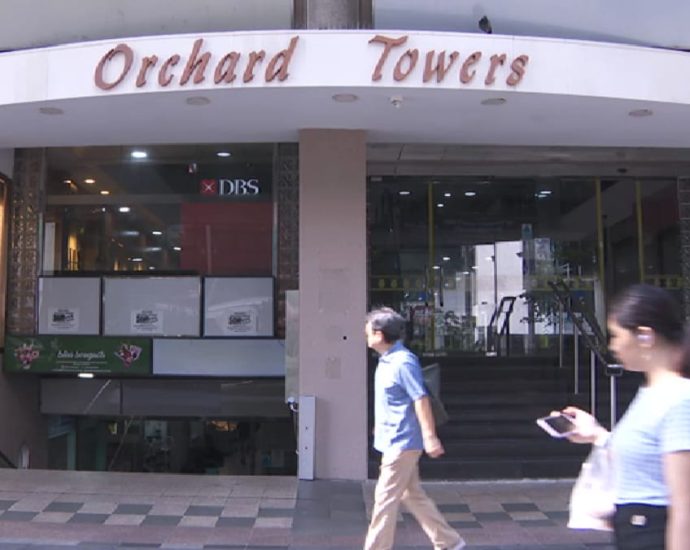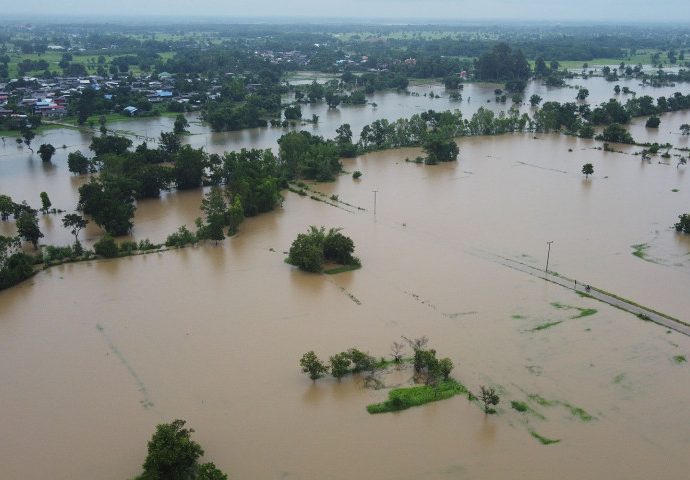Singapore recalls yogurt snack over potential choking hazard
SINGAPORE: The Singapore Food Agency (SFA) has ordered a recall of a dried yogurt snack as it poses a potential choking hazard. “SFA was informed by New Zealand Food Safety on a consumer level recall of Kiwigarden’s Greek Style Yoghurt Drops & Whole Blueberries due to the size of blueberry piecesContinue Reading
Fave collaborates with affiliate marketing platform Involve Asia
The partnership adds FindShare loyalty programme to Fave
Though this users can get cashback and spend it across Fave’s offerings
Fave is collaborating with Involve Asia to integrate FindShare, a cashback and rewards program platform provider in the Philippines.
Chen Chow Yeoh (pic), Co-founder of Fave, said, “Involve Asia’s expertise in affiliate marketing…Continue Reading
In pictures: First of two supermoons in August over Singapore
SINGAPORE: The Sturgeon Moon, the first of two supermoons in August, was seen over Singapore on Tuesday (Aug 1) night. Supermoons are a phenomenon that occurs when the moon’s orbit is closest to Earth, making the moon appear larger and brighter than usual, according to the Science Centre Observatory. The observatory addedContinue Reading
Indonesia sends emergency aid to Papua as drought kills 6
“Every year the disaster happens in the same area but this year it is more extreme, causing some people to die of starvation and several thousand to evacuate,” BNPB head Suharyanto, who like many Indonesians goes by one name, told a virtual briefing on Monday. “The area is no longerContinue Reading
Rice farming suspension considered amid scarce rain
El Nino effect could lead to rains this year being down 40% from last year
PUBLISHED : 1 Aug 2023 at 18:51
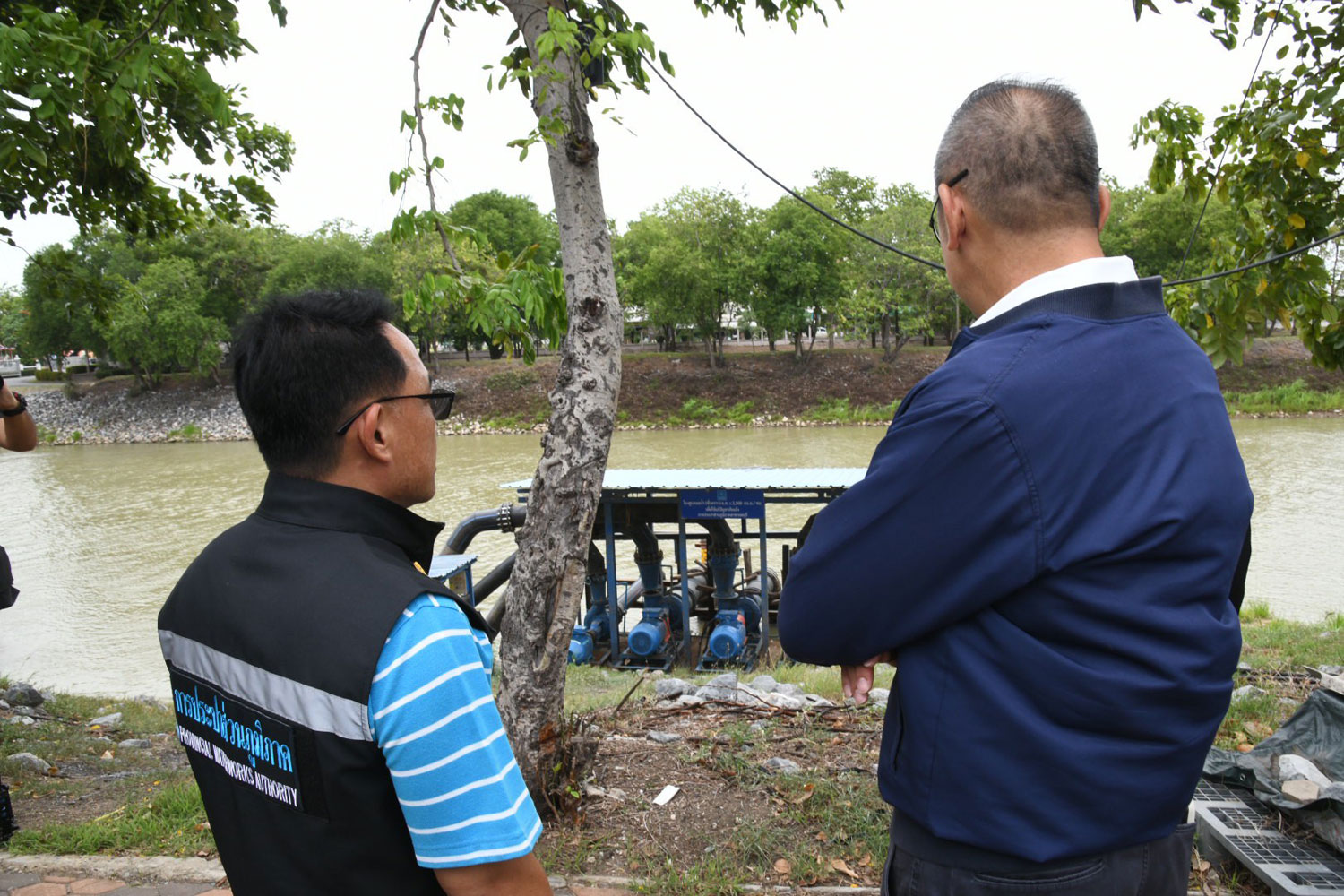
The government may consider announcing a suspension of rice farming to save water in the Central Plains region, says the Office of the National Water Resources (ONWR)
A water-crisis command centre could also be up to coordinate efforts to combat the impact of low rainfall, said Surasri Kidtimonton, the ONWR secretary-general.
Accumulated rainfall this year has fallen below the median range, leading to forecasts of a drier rainy season, he said on Tuesday.
The hardest-hit provinces will likely be those in the Central Plains region, dubbed the country’s rice belt, he added.
The region may face a 40% drop in accumulated precipitation this rainy season, possibly triggering widespread water shortages, Mr Surasri said.
Water levels are already running low in reservoirs at the four main dams — Bhumibol in Tak, Sirikit in Uttaradit, Kwae Noi Bamrung Dan in Phitsanulok and Pasak Jolasid in Lop Buri — which currently hold a combined 9,617 million cubic metres of water, or 39% of their storage capacity on average.
Moreover, only 2,921 million cubic metres of that water is useable at present, he added.
“What’s worrying is the El Nino phenomenon may extend right through to 2025. We have to plan nationwide water management prudently,” he said.
The heavily farmed Central Plains region uses a great deal of water for growing rice.
So far, rice is not being farmed on more than 11 million rai, with farmers who have not yet begun planting being urged to either delay their plans or switch to more drought-resistant plants.
A committee overseeing water allocation in the region’s river basins has been assessing the available water in numerous sources.
As far as water usage is concerned, the top priority must go to household consumption, followed by the diversion of water supplies to maintain natural ecological systems.
The committee is considering whether to announce the suspension of rice farming as the prospect of water shortages is growing, if measures currently in place are deemed insufficient to handle the problem.
The next step would be to issue an order from Prime Minister Prayut Chan-o-cha, in his capacity as chairman of the National Water Resources Committee, to set up a water-crisis command centre to combat drought.
Mr Surasri said that if necessary, the ONWR would ask the committee to order an extended suspension of rice farming in areas severely affected by water shortages.
After that, the office would seek cabinet approval for emergency response agencies such as the Interior Ministry and the military to integrate their assistance in flood-hit areas.
“It’s crucial that people use water sparingly,” the ONWR secretary-general said.
The Royal Irrigation Department has also been asked to store as much water as possible in reservoirs and dams, he added, despite the fact that several storms are forecast this and next month, which would boost the water levels in reservoirs.
Singapore business groups warn of ‘complexities’, more traffic jams if firms banned from ferrying workers on back of lorries
On Jul 24, more than 40 groups, businesses and individuals put out a joint statement calling for the Government to provide a timeline of measures working towards banning the transportation of workers on lorries. They included bodies advocating for foreign workers and other groups, a law firm, a music eventsContinue Reading
A new era for DCM? | FinanceAsia

The repercussions of recent black swan events are contributing to a new dealmaking landscape – one that continues to ebb and flow as geopolitical tensions rise and governments work to ensure that regional emissions fall.
As regulators respond to global inflation with interest rate hikes, market participants are adapting to the post-pandemic outlook, where the structural integrity of systemic lenders has been called into question; bank runs have been navigated; and a debt ceiling default, narrowly avoided.
“Volatility is the only constant,” Elaine He, head of Debt Capital Markets (DCM) Syndicate for Asia Pacific at Morgan Stanley, told FinanceAsia.
“Bond issuance has been slow as issuers wait on the sidelines because of uncertainty and the increasing rates environment,” Barclays’ head of Debt Origination, Avinash Thakur, motioned. “The biggest factor impacting dealmaking continues to be the US Federal Reserve’s tightening bias.”
“Even if there is a lot of liquidity in the market, the cost of borrowing is too high,” Singapore-based corporate practice partner at DLA Piper, Philip Lee, told FA.
“Most CFOs, CEOs or other corporate decision makers who are in their late 30s or early 40s, would not have even started their careers when interest rates were this high – in the late 1990s, or early 2000s. I suspect it will take some time for companies to adjust to this higher interest rate environment.”
But Sarah Ng, director for DCM at ANZ, holds some positivity amid current market uncertainty. She noted how recent headline events are influencing short-term market sentiment and shaping deal-focussed behaviour, for the better.
“We are seeing narrower open market windows. This has meant that issuers have had to adopt an opportunistic and nimble approach when accessing primary markets,” she offered.
“We did see a degree of caution and a flight to quality, especially post-Silicon Valley Bank (SVB) and Credit Suisse, but the sell-off was largely contained to specific bank capital products. What has been surprising, has been the speed of bounce-back in both primary and secondary market activities, with a robust pipeline of issuers and receptive investor base back in play,” she explained.
FA editorial board member and head of DCM for Asia Pacific at BNP Paribas, Manoj Agarwal, agreed that unexpected developments have made market activity very much “window-driven”.
“From an issuer perspective, being prepared and able to access markets at short notice, as and when market windows are optimal, has become important,” he said.
Furthermore, he noted that market recovery has been much faster this year, compared to the protracted period of indecision brought about by the Covid-19 pandemic.
“Although the year has been peppered with volatility and disruption, market efficiency is also improving, helping to reduce the impact these events have on dealmaking,” he emphasised.
Going local
George Thimont, head of ESG Syndicate for Asia Pacific and leader of the regional syndicate (ex-Japan) at Crédit Agricole, observes three notable trends emerging amid the current, Asia-based dealmaking environment.
“Issuance is broadly down across the board – in spite of good demand from the investor community. From a sectoral perspective, the notable absentees are the corporates, and local market conditions in certain jurisdictions, such as South Korea, have offered good depth and pricing versus G3 currencies.”
Citing Bloomberg data, Agarwal noted that for Asia ex-Japan, 2023 year-to-date (YTD) G3 DCM volume as of mid-June was down by 35.4% year-on-year (YoY), with 2022 already down by 54% compared to the same period in 2021.
But he agreed that South Korea displays some optimism, given that its 2023 YTD deal volumes remain flat, compared to the same period in 2022.
In fact, some of the market’s larger institutions have been quite active overseas. In February, the Korea Development Bank (KDB) issued $2 billion in bonds via Singapore’s exchange (SGX) in what constituted one of the largest public market issuances by a Korean institution in recent years.
Debt from issuers such as sovereigns, supranationals and agencies (SSA) or state-owned enterprises (SOEs) has benefitted, managing director and head of Asia Pacific Debt Syndicate at Citi, Rishi Jalan, told FA.
“We expect corporate issuance in the US dollar bond market to be a bit more robust in the second half of the year,” he explained. In the meantime, Jalan said that some issuers are selectively tapping local currency markets where financing terms are lower, such as in India, China and parts of Southeast Asia.
However, not everyone feels that Asia’s regional markets can cater to the demands of the significant dry powder at play.
“Most liquidity in the local currency market comes from the banking system,” Saurabh Dinakar, head of Fixed Income Capital Markets and Equity Linked Solutions for Asia Pacific at Morgan Stanley, told FA.
He is sceptical of the current capacity for local markets to meet the requirements of internationally minded issuers. However, he noted as an exception the samurai market, which he said had proven vibrant for some corporates with Japan-based businesses or assets.
“Larger long-term funding requirements can only be satisfied through the main offshore currencies, such as dollar securities,” he explained.
Turning to the regional initiatives that have been set up to encourage participation in Asia’s domestic markets such as Hong Kong’s Connect schemes – the most recent of which, Swap Connect, launched in May – Dinakar shared, “What we need to see is broader stability.… These developments are great, but for investors to get involved in a meaningful way, general risk-off sentiment needs to reverse.”
“There was huge optimism around reopening, post Covid-19. This has since faded as corporate earnings have disappointed and there has been no meaningful stimulus. The markets want to see policy stimulus and, as a result, corporate health improving. Performance across credit and equities will then follow.”
Sustainable momentum
One area of Asian activity that stands strong in the global arena, is ESG-related issuance.
In March, the International Capital Market Association (ICMA) published the third edition of its report on Asia’s international bond markets. The research highlighted that, in 2022, green, social, sustainability and sustainability-linked (GSSS) bonds accounted for 23% of total issuance in Asia – higher than the global ratio of 12%.
“Demand is still more than supply, and investors tend to be more buy and hold, so we’ve seen that sustainable bond issuance has been more resilient than the market as a whole,” shared Mushtaq Kapasi, managing director and chief representative for ICMA in Asia.
“ESG has come to form an integral part of the dealmaking conversation in Asia. Over 30 new ESG funds have launched here in 2023; the number of ESG-dedicated funds is up 4% YoY; and Asia makes up 11% of the global ESG fund flow as of 1Q23 – up from 5% a year ago,” said Morgan Stanley’s He.
“The Hong Kong Special Administrative Region (HKSAR) government recently came to market as the largest green bond issuer in Asia so far this year,” she added.
Discussing the close-to-$6 billion green bond issuance, Rocky Tung, FA editorial board member, director and head of Policy Research at the Financial Services Development Council (FSDC), shared that the competitive pricing contained a variety of durations and currencies that “help construct a more effective yield curve that will set the benchmark for other issuances – public and private – to come.”
This, he explained, would not only be conducive to the development of green and sustainable finance in the region, but would specifically enrich Hong Kong’s debt capital market.
“ESG-related bonds can provide issuers with an additional selling point to attract investors,” Mark Chan, partner at Clifford Chance, told FA.
“They can demonstrate the issuer’s commitment to fighting climate change for example…. Issuers with a social agenda, such as the likes of the Hong Kong Mortgage Corporation (HKMC), can highlight their mission and objectives by issuing social bonds to enhance the investment story.”
In October last year, HKMC achieved a world first through its inaugural issuance of a dual-tranche social facility comprising Hong Kong dollar and offshore renminbi tranches, which totalled $1.44 billion.
“We are also seeing more bespoke ESG bonds such as blue and orange structures,” Chan added, referring to recent deals that the firm had advised on, including the Impact Investment Exchange’s (IIX) $50 million bond offering under its Women’s Livelihood Bond (WLB) Series; and issuance by China Merchants Bank’s London branch, of a $400 million facility – the first blue floating-rate public note to be marketed globally.
FA editorial board member and head of sustainability for HSBC’s commercial banking franchise in Asia, Sunil Veetil, noted that while Asian issuance fell in most segments, green sukuk and social bonds helped sustain momentum.
“For green debt, energy was the most financed project category in Malaysia, the Philippines, Thailand, and Vietnam, accounting for more than 50% of allocation,” he shared, citing a report by the Climate Bonds Initiative (CBI).
“In Singapore, which remains the undisputed leader of sustainable finance in Southeast Asia, around 70% of green debt went to buildings, mainly for the construction of green buildings, and to a lesser extent, for retrofits and to improve energy efficiency.”
“There continues to be regulatory support for ESG bonds, including grants provided by the Asia-based stock exchanges to list green bonds,” added Jini Lee, partner, co-division head for finance, funds and restructuring (FFR) and regional leader at Ashurst.
A boom for private credit
Crédit Agricole’s Thimont told FA that Asian credit has remained resilient through recent global risk events. Private markets and funds are emerging as alternative sources of capital for those corporates with weaker funding lines, DLA Piper’s Lee observed.
Indeed, the further retrenchment of banks from lending has provided an opportunity for private credit players to swoop in and fill an increasingly large void. Globally, the sector has grown to account for $1.4 trillion from $500 million in 2015 and Preqin estimates that it will reach $2.3 trillion by 2027.
Once a niche asset class, investors are drawn to private credit’s floating rate nature which moves with interest rates and offers portfolio diversification.
Andrew Tan, Asia Pacific CEO for US private credit player, Muzinich & Co, earlier told FA that private credit players aim for investment returns of around 6-8% above the benchmark rate in the current environment.
The firm’s sectoral peers, including KKR, have argued that institutional investors should consider allocating as much as 10% to private credit. Alongside Blackstone and Apollo, the US global investment firm has added to its Asian private credit capabilities in recent years, while new players, including Tokyo-headquartered Softbank, have recently entered the market. In May, media reported that the Japanese tech firm sought to launch a private credit fund targetting late-stage tech startups and low double-digit returns.
Elsewhere in Japan, Blackstone recently partnered with Daiwa Securities to launch a private credit fund in the retail space, targetting individual high net worth investors (HNWIs).
Unlike in the US, where non-bank lenders now outnumber traditional financiers, “Apac remains heavily banked, so we expect to see ample room for private debt to grow in the region,” Alex Vaulkhard, client portfolio manager within Barings’ Private Credit team told FA.
He sees particular opportunity to serve the private equity (PE) space. “Although PE activity has been a bit slower in 2023, we expect activity to return, which will increase lending opportunities for private debt.”
Asia accounts for roughly $90 billion or about 6.4% of the global private credit market, according to figures cited by the Monetary Authority of Singapore (MAS) that highlight the market’s growth potential.
The biggest vehicle in Asia to date is Hong Kong-headquartered PAG’s fourth pan-Asia fund which closed in December at $2.6 billion.
However, overcrowding in some markets – notably India, where investors have amassed since new insolvency and bankruptcy laws came into force from 2016 – has made lenders increasingly compete for deals and acquiesce to “covenant-lite” structures, where investor protection is reduced.
But Tan, who is currently fundraising for Muzinich’s debut Asia Pacific fund – a mid-market credit strategy with a $500 million target, believes this only to be a problem in more developed markets such as Australia and is unlikely to become an issue in the wider region.
“If anything, the trend is in the direction of more conservative structures with increased over-collateralisation and stricter covenant protection,” he told FA.
Fundamentally, seasoned private credit participants are aware of the importance of covenant protection, so their likelihood to compromise on this is low, he added.
With monetary policies tightening at one of the fastest rates in modern history and recession looming in several markets, a key challenge for private credit is borrowers’ ability to service their debts.
“There is no doubt that default rates will go up and I would be cautious of cashflow lends with little or no asset backing,” said Christian Brehm, CEO at Sydney-headquartered private debt manager, FC Capital, calling for adequate due diligence when evaluating opportunities in the current environment.
“We would not be surprised to see an increase in default rates, but these are more likely to occur in more cyclical industries or among borrowers who have taken on too much debt in recent years,” Vaulkhard opined.
The managers suggested a tougher fundraising environment ahead, as the performance of fixed income instruments improves to offer limited partners (LPs) attractive returns.
What’s next?
The banking sector’s evolving regulatory landscape is also contributing to Asia’s changing DCM outlook.
Initially proposed as consequence of the 2008 global financial crisis (GFC) and with renewed rigour on the back of recent adversity across the banking sector, new capital requirements are set to be rolled out in the US and Europe as a final phase of Basel III. Often dubbed “Basel IV” for their magnitude, market implementation was originally scheduled for January 2023, before being delayed by a year to support the operational capacity of banks and market supervisors in response to the Covid-19 pandemic.
Experts caution that while more stringent banking regulation will challenge Asia’s traditional lending mix, it will also offer opportunity.
“There is a big amount of regulatory capital to be rolled out following the new Basel III rules, which will impact the type of debt to be issued,” said Ashurst’s Lee.
“We have been speaking to issuers who have been anticipating this uptrend as well in the coming years and are building in this scenario in their mid- to long-term treasury planning,” she added.
“Although the implementation of the Basel III final reform package was postponed in jurisdictions such as Hong Kong, those subject to it will no doubt be grappling with the new capital requirements already,” said Clifford Chance’s Chan, noting how its introduction will likely impact banks’ risk-weighted asset (RWA) portfolios.
“Aspects such as the raising of the output floor could potentially see some banks try to charge more for their lending,” he said.
Hironobu Nakamura, FA editorial board member and chief investment officer at Mizuho and Dai-Ichi Life tie-up, Asset Management One Alternative Investments (AMOAI), agreed that the new Basel reforms will lead to more scrupulous risk assessment by lenders, but how this will affect banks’ portfolio construction more concretely, remains uncertain.
“A heavy return on risk asset (Rora) requirements will likely impact banks’ risk asset allocations, region to region. [But] it is quite early to determine whether Asia is risk-off or -on at this stage, from a bank portfolio perspective.”
FA editorial board member and AMTD Group chair, Calvin Choi, proposed that if lending were to become more expensive for global players, there could be upside for regional banks.
“Updated Basel rules will impact global banks operating onshore, adding costs and making them less able to use their balance sheets. Local banks won’t have this constraint, so they will win market share,” he shared.
However, he noted that for those Asian banks that want to participate in overseas markets, business will become more costly and compliance-heavy. “It will keep more local banks local.”
“All of this will mean a higher cost of borrowing and less capital available to banks…. It will create opportunities for non-bank lenders such as non-banking financial institutions (NBFI), family offices and private funds to fill the gap,” said DLA Piper’s Lee.
“With stricter capital requirements under ‘Basel IV’, we anticipate that bank loan funding will become more expensive for issuers. As such, we could see a return to capital market funding from issuers who have hitherto heavily relied on loan markets this year,” said ANZ’s Ng.
Choi added that this may even lead to Asia’s bond markets being viewed as more competitive than their global counterparts.
“Overall, the DCM market has become slow and stagnated,” Nakamura observed. “However, there are areas where funding is continually needed,” he said, pointing to the energy transition space as well as digital transformation.
What exactly the new regulatory environment will mean for Asia’s market participants amid macro volatility, rising interest rates and escalating geopolitical tensions, remains unclear. But the developing outlook could offer those able to structure more creative facilities, more business; drive the advancement of Asia’s local capital markets; and support the region’s wider efforts to transition to net zero.
Proponents of private credit remain optimistic.
“Capital raising might cool down in the short-term, but the true private debt lending market is about to kick off,” said Brehm.
“We believe that there is a lot of growth ahead,” Barings’ Vaulkhard stated, sharing that conditions are likely to improve for lenders this year, with spreads widening, leverage falling, and overall credit quality enhancing.
“We are only at the start of a multi-year growth journey,” Tan concluded.
¬ Haymarket Media Limited. All rights reserved.
Debate rages in Indonesia over appointment of active military personnel to civilian posts amid bribery probe
Some NGOs are calling for a cessation in the practice of appointing active military officers to non-military positions. “The government must evaluate the presence of active military officers in a number of civilian institutions … because it will only create legal controversies whenever a crime involving these active military membersContinue Reading
All nightlife outlets in Orchard Towers have ceased operations except for one: Police
ORCHARD TOWERS’ SEEDY REPUTATION Once known for its raunchy nightlife, Orchard Towers has been trying to revamp its image. Most floors in the 18-storey building are occupied by offices, but commercial units take up the first few floors. In 2019, Orchard Towers was the scene of a fight that resultedContinue Reading
Floods hit 1,000 rai of farmland in Nakhon Phanom
Water level of Mekong River also rising steadily
PUBLISHED : 1 Aug 2023 at 18:16

NAKHON PHANOM: Heavy rain pounded this northeastern province overnight, flooding almost 1,000 rai of farmland in That Phanom district.
Hours of downpours triggered runoff from the Phu Phan mountain range, sending a huge volume of water into two tributaries of the Mekong River — Lam Nam Bang and Lam Nam Kam. The rivers overflowed their banks, flooding many areas in That Phanom district and parts of Na Kae district.
Two sub-districts of That Phanom — tambons Fang Daeng and Na And — were the worst hit.
If rain continued and floodwaters did not recede in one week, vast paddy fields were expected to be damaged as water from the tributaries flowed slowly into the Mekong. Water levels in the Mekong River have been rising, by 30-40 centimetres a day.
If the Mekong water level reaches a critical point at 12 metres, many areas will be adversely affected, say forecasters.
Provincial authorities have coordinated with district authorities in areas near the Mekong and mountain ranges — Ban Phaeng, Tha Uthen, Muang, That Phanom and Na Kae districts — to warn local residents to protect their properties against more runoff.





